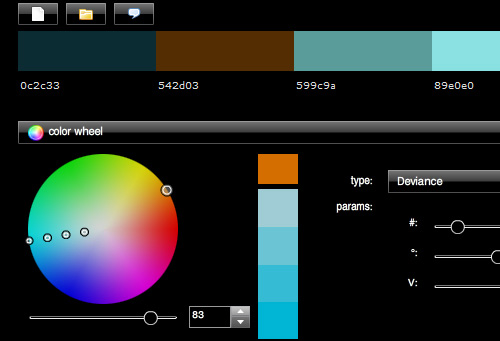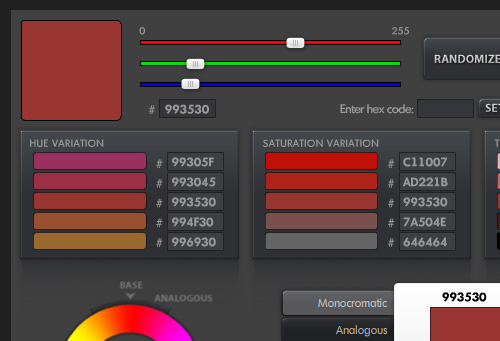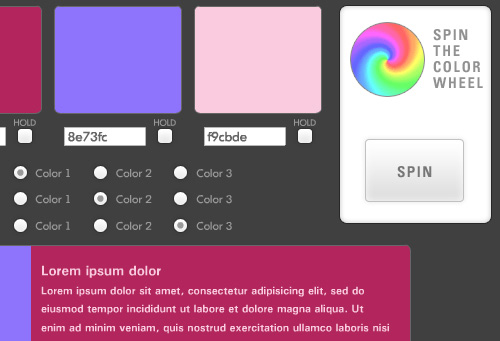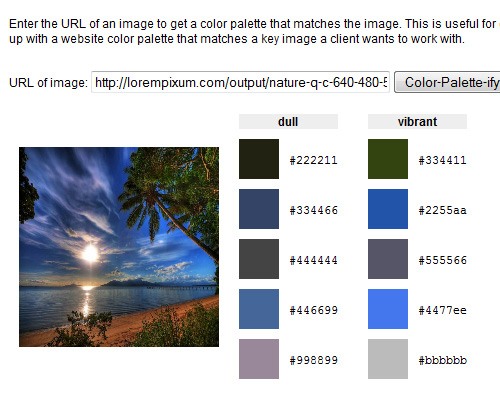Colours in web design: Resources and Tools
18/06/2011
Creating the perfect color palette for each design project can be a time-consuming task. We might settle on a color scheme, only to change our minds five minutes later.
Sometimes we’ll feel like we’ve found a solid set of colors, but don’t know how to make them work together in the project we’re working on. Sometimes it seems like we don’t have enough colors or too many colors or the wrong combination of colors.
How is it that some web designers seem to be able to come up with the perfect color combinations in the work they produce? How much of a role does choosing the right color palette play in web design?
We’re going to explore some of the most popular colors being used in modern web design in the hopes of understanding why certain colors are used for particular websites. At the end, we will conclude with a list of tools to help you select colors.
Why Color Matters
Color is a strong influencing factor in design and in the world around us. Each color has its own meaning to us based on culture, education, personality and a myriad of other factors. Thus, colors can strongly influence us in subconscious, natural ways.
Some people may trust a company more simply by their brand colors. Certain emotions and feelings can be evoked simply by seeing colors, such as "danger" for red, "cleanliness" for white, or "tranquility" for green.
An experienced designer knows that choosing the right colors isn’t just essential for aesthetics; colors can be used as a tool to convey a certain message.
When Color Doesn’t Matter
Most of us intuitively know why color matters, so before each design, we painstakingly develop a color palette, and then we adjust it, and then we adjust it some more.
We obsess over our color selections ad nauseam. Sometimes, the "perfect" color or set of colors never feels right. It needs to be a bit darker or a tad bit lighter or moresaturated and a bit more blue.
Before we know it, it’s midnight (and we’ve been up since 6:00 AM) and we still haven’t come up with a color scheme.
It’s at this point when color doesn’t matter so much; the point in which we lose productive time over picking colors instead of just deciding and tweaking later if need be. It’s when we strive for perfection that picking colors becomes an act of futility because we find that there’s no such thing as a perfect anything; we’ll always find a flaw in our decisions.
Usually, your first instinct on color selection will be to get as close to "perfect" as you can get. Your instinct is smarter than you think, so trust it and see where it takes you.
The goal, then, is to put together a color palette based on intelligent decision from what you know about the design project, and then work with it.
Color Is Powerful
The hue, saturation, darkness, lightness of a color can affect its intended meaning and message. And if color can mean something, then it has the power to influence those viewing it.
If you would like to learn more about the meaning of popular colors, read A Look into Color Theory in Web Design.
Next, let’s go over some popular colors in web design, as well as briefly discuss their commonly held meanings in western culture.
Red Web Designs
Bright red gets attention pretty fast, and it can be used in elements at top levels of the visual hierarchy in a design.
In terms of visual weight, some studies conclude that it’s one of the heaviest colors.
However, because red is such a powerful and heavy color, it shouldn’t be overused, because it can invoke a sense of urgency, and in most situations, you don’t want to make the viewer constantly feel this way.
Some believe red can enhance metabolism, increase blood circulation and stimulation.
Whether by culture, standardization or psychology, red is oftentimes used in situations warranting your attention, such as in stop signs, ambulance and police sirens, stop lights, fire trucks, and so on.
Red is used in many fast food restaurants because it’s believed to stimulate appetite.
Here are some color tools to help you generate color palettes for your next web design.
Toucan
Color Wizard
Color Wheel
Color Scheme Designer
Color Explorer
Color Jack
Contrast-A
Color Rotate
Color Palette Generator
Web 2.0 Color Palette
Conclusion
Color can have a profound impact on design. Always consider color carefully. Choosing which colors to use are just as important as choosing not to use a certain color. Color is one of the most powerful design concepts and it can greatly influence how a web design is perceived.









